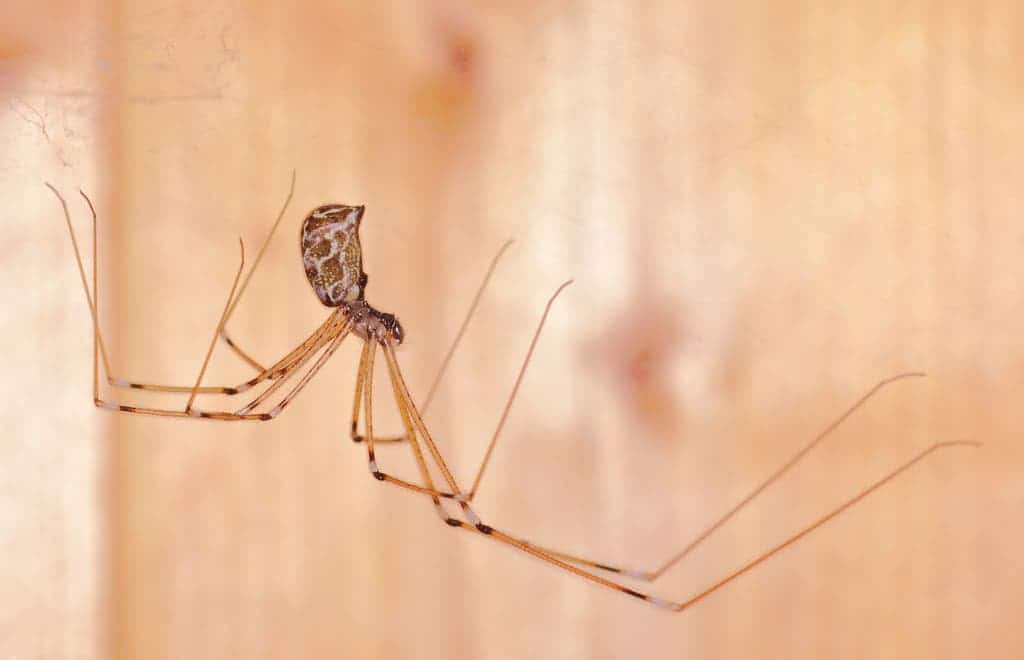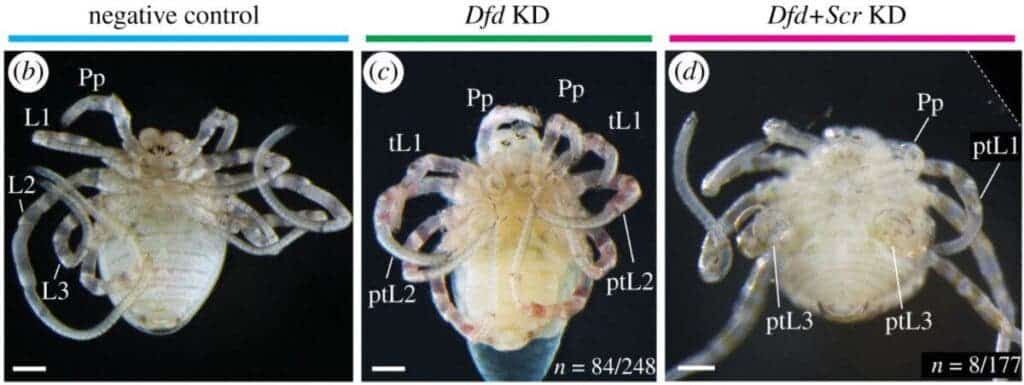
Hate them or love them, daddy longlegs are perhaps the most widespread arachnids in the world, being present on all continents except Antarctica. Their extra-long limbs are unique among arachnids, but how did they get them? In a new study, researchers genetically modified some specimens by knocking down a pair of genes associated with leg development. In the process, they made daddy longlegs with short limbs. Basically, they made daddy shortlegs.
Though not exactly spiders, the daddy longlegs genome could unravel arachnid evolution
Daddy longlegs, also known as harvestmen, are not actually spiders. They are Opiliones, which are more closely related to scorpions than to spiders.
A few characteristics differentiate Opiliones from spiders. For starters, they just have two eyes. They cannot produce silk and therefore cannot make webs. They also lack venom glands. Spiders usually have two distinct body segments, while Opiliones have a compact oval-shaped body. It looks like one segment but the cephalothorax and abdomen are fused together so that the joint is hard to see. Finally, the tips of a harvestman’s limbs are flexible, allowing them to wrap around a twig like a monkey’s tail.
Nevertheless, scientists think that the genome of daddy longlegs could be key to unraveling the evolutionary history of spiders, which is why researchers led by Guilherme Gainett from the University of Wisconsin-Madison decided to embark on this study.
The scientists sequenced the genome of Phalangium opilio, one of the most common arachnids of more than 6,000 different species of daddy longlegs. Using RNA interference, a cellular mechanism that uses the gene’s own DNA sequence to turn it off, the team of researchers deactivated genes involved in leg development in hundreds of daddy longlegs embryos.

The resulting genetically modified specimens developed six out of the critter’s eight legs with only about half the size of their normal counterparts. In fact, the legs don’t seem to be legs at all but rather a different kind of appendage, known as a pedipalp, which is used to handle food. But in the process, the daddy shortlegs also lost their tarsomeres, which allow them to grasp sticks.
These experiments, although they may seem gruesome and cruel, are important to deciphering the complex web of genetics and epigenetics that give rise to typical arachnid features, from a spider’s fangs to a scorpion’s pincers.
“We anticipate that the genome of P. opilio will facilitate the development of more sophisticated tools for functional genetics, toward refining the understanding of how daddy-long-legs make their long legs,” the authors wrote in the Proceedings of the Royal Society B.
Was this helpful?



